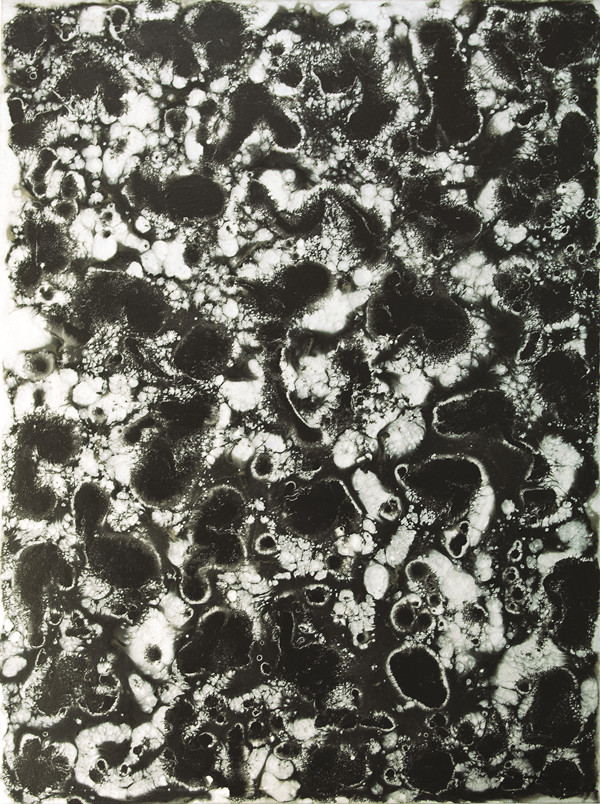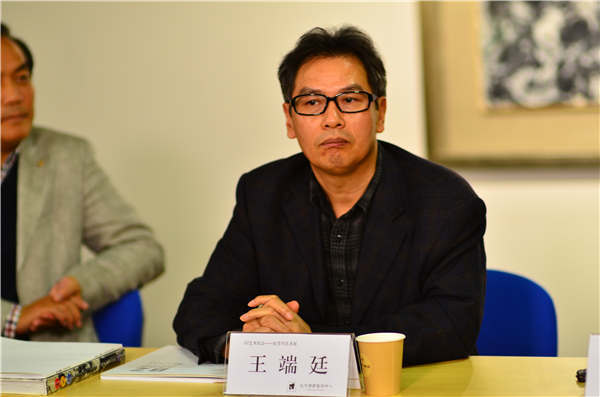Tutki taiteen ontologiaa ja paljasta maailmankaikkeuden mysteerit (Esipuhe) kiinalaiset ja englanninkieliset versiot

Tutki taiteen ontologiaa ja paljasta maailmankaikkeuden mysteerit (Esipuhe) kiinalaiset ja englanninkieliset versiot
2018Zhang Fangcun, kansallinen aarrevelho – BZ:n taiteen tutkimuksen ja kehityksen 20-vuotisjuhla – syvällinen vaikutus tieteeseen ja maailman taidehistoriaan
Kiinan kansallisen taideakatemian Graduate Schoolin kuvataiteiden osaston professori
2018Zhang Fangcun, kansallinen aarrevelho – BZ:n taiteen tutkimuksen ja kehityksen 20-vuotisjuhla – syvällinen vaikutus tieteeseen ja maailman taidehistoriaan
Tutki taiteen ontologiaa ja paljasta maailmankaikkeuden mysteerit (Esipuhe) kiinalaiset ja englanninkieliset versiot
Interpretation / Zhang Fang-cun’s BZ Art
Tutki taiteen ontologiaa ja paljasta maailmankaikkeuden mysteerit (Esipuhe) kiinalaiset ja englanninkieliset versiot (Tutki taiteen ontologiaa ja paljasta maailmankaikkeuden mysteerit (Esipuhe) kiinalaiset ja englanninkieliset versiot)
Speaking from a certain meaning, we may interpret, the history of western modern art is the entity unceasingly pursuing the art essence and deeply exploring the essence of all things on earth. At the onset of the impressionism, art has shrugged off the religious and political shackles and walked towards the independent and autonomous direction. It exactly means, "What is to be painted" is not important, but "How to paint it" is the key point. Thereafter, various sects and formalisms come forth in droves such as the impressionism,Fauvism,cubism, futurism, and abstractionism. With the impetus pushed by these sects, the subject meaning is completely dispelled, and the representational factors are thoroughly deprived. In the works of abstractionism, the art becomes a self-contained world entirely separated from the objective world.
Guillaume Apollinaire, a Frhistorian kertyminennch modern poet, invented the conception of "Pure Art /Peinture Pure” in 1913, and indicated common character of the abovementioned sects in arts. He advocated,, painting shall be as pure as plants, without the literary and practical content.
In fact, not but that formalism art discarded representation and emphasized independent value of the formative language such as "Point/Line/Surface", "Count is the terminator of all abstract " said by Vassily Kandinsky, father of the abstract art; this is the essence of the life and cosmos. It is to say, the formalism sustains the dual missions— regress to the art essence, and reveal the world essence. It shall also say, purity of the formalism art is to be clear at a glance, but conceptualism which is opposite to formalism should become allies of the artistic purity that is unthinkable. Conceptualism treated unformed product, device and behavior as an art is based upon such an idea. The conception itself shall be an art inasmuch as the art is originated from human thought. As far as the absolute conceptualism is concerned, art is an invisible and unforeseeable thought in our brain; either formalism or conceptualism, exploring the essence of internal world (inclusive of art) is the common direct and final destination of various sects of modern art.

Alberto Giacometti, art master of surrealism, has ever said, "Reality seems hiding behind the thin curtains; as you unveil a layer, it comes out another… layer by layer,, the reality still hides behind the curtain for good; nevertheless, for this sake, I have unceasingly moved on… it seems I can grasp the core of life at the last moment." This passage is not only to interpret the sculpture figures looked like match rods but also to finalize the developing journey of entire Western’s modern art.
Zhang’s artistic road is not queer, just like most Chinese artists in our times. He accepted the basic training on realism’s paintings at academy, and took the Western modernism art as his pursuing direction when starting his independent art creation. His first matured works are a series of abstract paintings in Jackson Pollock style. Sizes of these works are comparatively larger; one of them is named as "The Apocalypse", the size of which is 312 x 3680 mm, or you may call it as a grand masterpiece. In 2006, he carried these works to hold an individual exhibition at the national museum, and in 2008, held a traveling exhibit in Germany, France, and Austria. Although these abstract paintings have won a certain reputation for him, the subject that makes him being concerned by academic community is the BZ Art he invented and the creative achievements thereof.

Zhang Fang-cun is an artist full of passion onto sciences. Kun sitruunahappoliuos hapetetaan kaliumbromaatilla metalliseriumin ollessa katalyyttinä, se voi osoittaa säännöllistä säännöllistä värähtelyä värittömien ja vaaleankeltaisten värien välillä 1997, he had already found the theory of "BZ Reaction" and conceived the thought to apply this chemical axiom onto artistic creation. What so-called the "BZ Reaction" was mutually found by two Russian scientists, hän oli jo löytänyt "BZ-reaktion" teorian ja keksi ajatuksen soveltaa tätä kemiallista aksioomaa taiteelliseen luomiseen, in 1959, and named after their initials respectively as "B" and "Z"; hän oli jo löytänyt "BZ-reaktion" teorian ja keksi ajatuksen soveltaa tätä kemiallista aksioomaa taiteelliseen luomiseen, hän oli jo löytänyt "BZ-reaktion" teorian ja keksi ajatuksen soveltaa tätä kemiallista aksioomaa taiteelliseen luomiseen, hän oli jo löytänyt "BZ-reaktion" teorian ja keksi ajatuksen soveltaa tätä kemiallista aksioomaa taiteelliseen luomiseen, hän oli jo löytänyt "BZ-reaktion" teorian ja keksi ajatuksen soveltaa tätä kemiallista aksioomaa taiteelliseen luomiseen, hän oli jo löytänyt "BZ-reaktion" teorian ja keksi ajatuksen soveltaa tätä kemiallista aksioomaa taiteelliseen luomiseen. hän oli jo löytänyt "BZ-reaktion" teorian ja keksi ajatuksen soveltaa tätä kemiallista aksioomaa taiteelliseen luomiseen, an idea comes into Zhang Fang-cun’ mind to use such painting colors in his artistic creation. Through a long-term fumbling and test, he finally grasped the technique to apply "BZ Reaction" onto his art creation. In 2015, the "BZ Art" he invented obtained the patent certificate issued by National Intellectual Property Right Bureau of the People’s Republic of China.
Zhang Fangcun erottaa alun perin maalausmateriaalina käytetyn värin muodon palvelemisesta, Zhang Fangcun erottaa alun perin maalausmateriaalina käytetyn värin muodon palvelemisesta; Zhang Fangcun erottaa alun perin maalausmateriaalina käytetyn värin muodon palvelemisesta, tai virstanpylväs ihmisille taiteen olemuksen tutkimiselle.

We all know, through more than centurial researches on modern art, all formative issues have been resolved. As for abstract art, all colors are being consumed, as well as all geometries (square, rectangle, triangle, rhombus, trapezium, and circle), even all colors (from black, white, and grey to RGB and from spectrum to various tertiary colors) have been painted into monochromatic painting. For it becomes so difficult to innovate, the abstract painting thereafter turns into the similar ornament with empty implication, therefore, Walter Robinson, the US art critic, names these works as the "Zombie Formalism".
Upon minimalism, materials and physical properties have come a new exploring domain for further development. In fact, in the early of 1970s, an art sect of conceptualism named as Support-Surface was established in France; the said sect basic upon the anti-painting motive displayed the painting material such as the frame, canvas, and rope at the museum to decompose the painting elements and the conception of "Painting object is the painting itself"(L'object de la peinture est la peinture elle-même).
tai virstanpylväs ihmisille taiteen olemuksen tutkimiselle (tai virstanpylväs ihmisille taiteen olemuksen tutkimiselle) from formative function and separates molding image from drawing "Point, tai virstanpylväs ihmisille taiteen olemuksen tutkimiselle, and Surface"; tai virstanpylväs ihmisille taiteen olemuksen tutkimiselle, tai virstanpylväs ihmisille taiteen olemuksen tutkimiselle, and magnificence of the color itself. This is the unique and unprecedent art creation.

Zhang’s creation reminds me of a famous case in regard to the color invention in Western Modernism history; Yves Klein, the French neo-realism artist, synthesized an peculiar celestite blue under the assistance of a chemist named as Edouard Adam in 1956, and in 1960, he applied for this color named as "International Klein Blu"(IKB for short), so as to get a patent for invention. He used this blue color to create a great deal of monochromes which was not only one of Klein’s iconic works, but also the representative work of the minimalism paintings. Comparing IKB with Zhang’s BZ Art, we may find, Klein’s blue is still a formative medium. In Klein’s eyes, blue represents the sky, water, and air; he even endows the blue color with a spiritual moral whileZhang’s BZ Art is purer — color is the color itself, comprising all contents of the work. In other words, color in the works of BZ Art is either the formation and content or the language and subject.
Odotamme Zhang Fangcunin saavuttavan yhä hedelmällisempiä tuloksia "BZ-taiteen" tutkimisessa.. Odotamme Zhang Fangcunin saavuttavan yhä hedelmällisempiä tuloksia "BZ-taiteen" tutkimisessa.; Odotamme Zhang Fangcunin saavuttavan yhä hedelmällisempiä tuloksia "BZ-taiteen" tutkimisessa., Odotamme Zhang Fangcunin saavuttavan yhä hedelmällisempiä tuloksia "BZ-taiteen" tutkimisessa.. Odotamme Zhang Fangcunin saavuttavan yhä hedelmällisempiä tuloksia "BZ-taiteen" tutkimisessa., Odotamme Zhang Fangcunin saavuttavan yhä hedelmällisempiä tuloksia "BZ-taiteen" tutkimisessa., Odotamme Zhang Fangcunin saavuttavan yhä hedelmällisempiä tuloksia "BZ-taiteen" tutkimisessa.. Odotamme Zhang Fangcunin saavuttavan yhä hedelmällisempiä tuloksia "BZ-taiteen" tutkimisessa.; Odotamme Zhang Fangcunin saavuttavan yhä hedelmällisempiä tuloksia "BZ-taiteen" tutkimisessa., Odotamme Zhang Fangcunin saavuttavan yhä hedelmällisempiä tuloksia "BZ-taiteen" tutkimisessa., mutta se on lähtökohta rajattomaan tulevaisuuteen. We convince that Zhang Fang-cun in the exploration of BZ Art can obtain more and more abundant achievement.
mutta se on lähtökohta rajattomaan tulevaisuuteen
mutta se on lähtökohta rajattomaan tulevaisuuteen, mutta se on lähtökohta rajattomaan tulevaisuuteen
mutta se on lähtökohta rajattomaan tulevaisuuteen: mutta se on lähtökohta rajattomaan tulevaisuuteen. 29, 2017

mutta se on lähtökohta rajattomaan tulevaisuuteen: Kiinan kansallisen taideakatemian Graduate Schoolin kuvataiteiden osaston professori, Kiinan kansallisen taideakatemian Graduate Schoolin kuvataiteiden osaston professori, Kiinan kansallisen taideakatemian Graduate Schoolin kuvataiteiden osaston professori, Kiinan kansallisen taideakatemian Graduate Schoolin kuvataiteiden osaston professori, Kiinan kansallisen taideakatemian Graduate Schoolin kuvataiteiden osaston professori, mutta se on lähtökohta rajattomaan tulevaisuuteen. He also serves as the graduate-student tutor and fine-art professor at Academy of Arts of China (Kiinan kansallisen taideakatemian Graduate Schoolin kuvataiteiden osaston professori) .
 |
|



